Nose skin diseases. Comprehensive Guide to Nasal Skin Diseases: Types, Treatments, and Clinical Considerations
What are the main types of nasal skin lesions. How are benign, premalignant, and malignant nasal skin conditions diagnosed and treated. What factors should clinicians consider when evaluating and managing nasal skin diseases.
Overview of Nasal Skin Diseases
The nose, being a prominent facial feature, is susceptible to various skin conditions that can significantly impact both health and appearance. Nasal skin diseases encompass a wide range of conditions, from benign lesions to malignant tumors. Understanding these conditions is crucial for proper diagnosis, treatment, and management.
Nasal skin lesions can be broadly classified into three categories:
- Benign lesions
- Premalignant lesions
- Malignant tumors
Each category presents unique challenges in terms of diagnosis, treatment, and potential cosmetic implications. Healthcare providers must be well-versed in identifying and managing these diverse conditions to ensure optimal patient outcomes.

Benign Nasal Skin Lesions
Benign nasal skin lesions are non-cancerous growths or conditions that affect the skin of the nose. While they may not pose a significant health risk, they can cause cosmetic concerns and, in some cases, functional issues. Here are some common types of benign nasal skin lesions:
Nonmalignant Tumoral Lesions
- Freckles
- Comedo
- Adenoma sebaceum (Pringle disease)
- Hydrocystoma
- Fibrous papules
- Sebaceous hyperplasia
- Rhinophyma
Are freckles on the nose a cause for concern? Freckles are generally harmless pigmented spots that appear due to sun exposure. However, it’s essential to monitor them for any changes in size, shape, or color, as these could indicate a more serious condition.
Autoimmune and Inflammatory Conditions
- Pemphigus
- Sarcoidosis
- Systemic lupus erythematosus
- Facial eosinophilic granuloma
- Rosacea
- Herpes zoster infection
- Leishmaniasis
- Leprosy
How does rosacea affect the nose? Rosacea is a chronic inflammatory skin condition that can cause redness, visible blood vessels, and sometimes small, pus-filled bumps on the nose and other areas of the face. In severe cases, it may lead to rhinophyma, a condition characterized by thickening of the nasal skin.
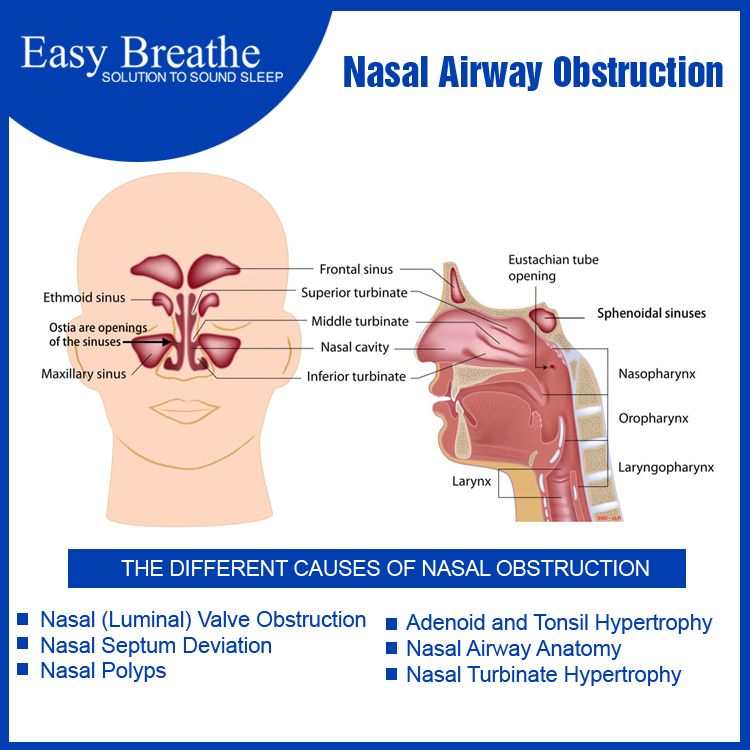
Vascular Lesions
- Telangiectasis
- Hemangioma
- Spider nevus
Can vascular lesions on the nose be treated? Many vascular lesions can be effectively treated using various methods, including laser therapy, sclerotherapy, or surgical excision. The choice of treatment depends on the specific type and extent of the lesion, as well as individual patient factors.
Premalignant Nasal Skin Lesions
Premalignant nasal skin lesions are conditions that have the potential to develop into skin cancer if left untreated. Early identification and intervention are crucial for preventing progression to malignancy. The two primary types of premalignant nasal skin lesions are:
- Actinic keratosis
- Keratoacanthoma
Why is it important to treat actinic keratosis? Actinic keratosis is considered a precursor to squamous cell carcinoma. While not all actinic keratoses progress to cancer, treating them early can significantly reduce the risk of malignant transformation.
Treatment options for premalignant lesions may include:

- Topical medications (e.g., 5-fluorouracil, imiquimod)
- Cryotherapy
- Photodynamic therapy
- Surgical excision
The choice of treatment depends on factors such as the size and location of the lesion, the patient’s overall health, and the potential for scarring or other cosmetic concerns.
Malignant Nasal Skin Tumors
Malignant nasal skin tumors are cancerous growths that require prompt and aggressive treatment. The three main types of malignant nasal skin tumors are:
- Melanoma
- Basal cell carcinoma
- Squamous cell carcinoma
How is melanoma of the nose diagnosed? Diagnosis of nasal melanoma typically involves a thorough visual examination, followed by a biopsy of the suspicious lesion. Dermatoscopy and advanced imaging techniques may also be used to assess the extent of the tumor.
Treatment approaches for malignant nasal skin tumors may include:
- Surgical excision with clear margins
- Mohs micrographic surgery
- Radiation therapy
- Chemotherapy
- Immunotherapy
The specific treatment plan depends on factors such as the type and stage of cancer, the patient’s overall health, and the potential impact on nasal function and appearance.

Diagnostic Approaches for Nasal Skin Lesions
Accurate diagnosis of nasal skin lesions is crucial for determining the appropriate treatment strategy. Diagnostic approaches may include:
- Visual examination
- Dermoscopy
- Biopsy (punch, shave, or excisional)
- Imaging studies (e.g., CT, MRI)
- Blood tests (for systemic conditions)
Why is dermoscopy useful in evaluating nasal skin lesions? Dermoscopy allows for non-invasive, magnified visualization of skin structures and patterns that are not visible to the naked eye. This can help differentiate between benign and malignant lesions and guide biopsy decisions.
In some cases, a combination of diagnostic techniques may be necessary to reach a definitive diagnosis and determine the extent of the lesion.
Treatment Modalities for Nasal Skin Lesions
The treatment of nasal skin lesions varies depending on the type of lesion, its location, and the patient’s individual circumstances. Common treatment modalities include:
Topical Treatments
- Corticosteroids
- Retinoids
- Immunomodulators
- Chemotherapeutic agents
Procedural Treatments
- Cryotherapy
- Electrocautery
- Laser therapy
- Chemical peels
- Dermabrasion
Surgical Interventions
- Excision
- Mohs micrographic surgery
- Reconstructive procedures
How does Mohs micrographic surgery benefit patients with nasal skin cancer? Mohs surgery allows for precise removal of cancerous tissue while preserving as much healthy tissue as possible. This is particularly advantageous for nasal lesions, where maintaining function and cosmetic appearance is crucial.

The choice of treatment depends on various factors, including the type and extent of the lesion, the patient’s overall health, and potential cosmetic outcomes. In some cases, a combination of treatment modalities may be used for optimal results.
Cosmetic Considerations in Nasal Skin Lesion Management
The nose’s prominent position on the face makes cosmetic outcomes a significant concern in the management of nasal skin lesions. Factors to consider include:
- Potential for scarring
- Impact on nasal contour and symmetry
- Changes in skin color or texture
- Functional implications (e.g., nasal airway obstruction)
How can the risk of scarring be minimized when treating nasal skin lesions? Minimizing scarring involves careful selection of treatment modalities, proper wound care, and, in some cases, the use of adjunctive treatments such as silicone sheets or topical agents to promote optimal healing.
In cases where significant tissue removal is necessary, reconstructive procedures may be required to restore nasal appearance and function. These may include:
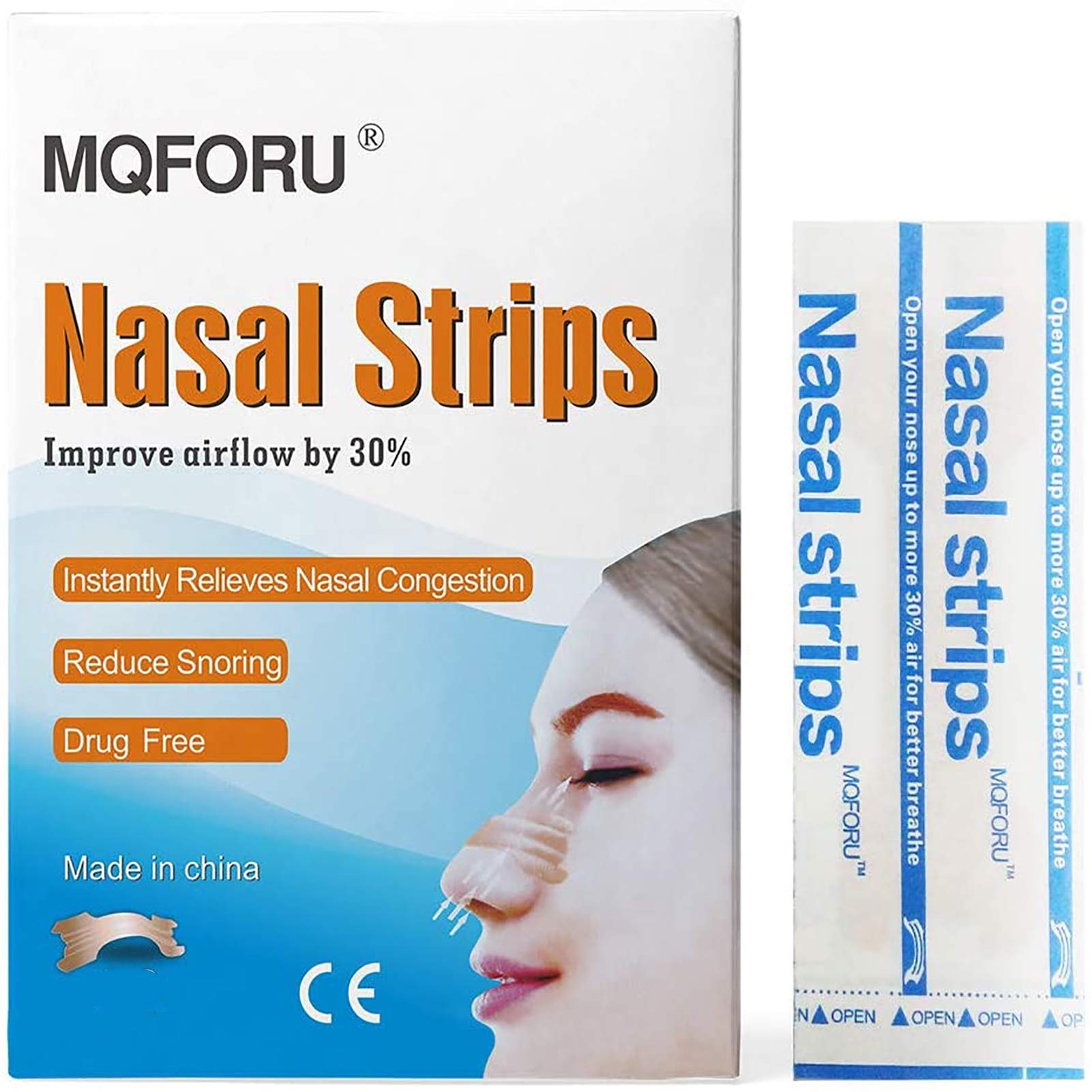
- Local flaps
- Skin grafts
- Cartilage grafts
- Prosthetic implants
Collaboration between dermatologists, plastic surgeons, and otolaryngologists may be necessary to achieve the best possible functional and cosmetic outcomes.
Prevention and Long-term Management of Nasal Skin Conditions
Preventing nasal skin conditions and managing them long-term involves a multifaceted approach. Key strategies include:
- Sun protection (sunscreen, protective clothing, avoiding peak UV hours)
- Regular skin examinations
- Prompt treatment of any new or changing lesions
- Lifestyle modifications (e.g., avoiding triggers for rosacea)
- Ongoing medical management for chronic conditions
How often should individuals with a history of nasal skin lesions undergo follow-up examinations? The frequency of follow-up examinations depends on the specific condition and individual risk factors. Generally, patients with a history of skin cancer or precancerous lesions should have skin checks at least annually, while those with more aggressive tumors may require more frequent monitoring.

Patient education plays a crucial role in long-term management. Healthcare providers should ensure that patients understand:
- The importance of sun protection
- How to perform self-examinations
- Signs and symptoms that warrant medical attention
- The need for adherence to prescribed treatments and follow-up appointments
By implementing these preventive measures and maintaining vigilant follow-up care, patients can minimize their risk of developing new or recurrent nasal skin lesions and ensure prompt treatment when necessary.
Skin diseases of the nose
Save citation to file
Format:
Summary (text)PubMedPMIDAbstract (text)CSV
Add to Collections
- Create a new collection
- Add to an existing collection
Name your collection:
Name must be less than 100 characters
Choose a collection:
Unable to load your collection due to an error
Please try again
Add to My Bibliography
- My Bibliography
Unable to load your delegates due to an error
Please try again
Your saved search
Name of saved search:
Search terms:
Test search terms
Email:
(change)
Which day?
The first SundayThe first MondayThe first TuesdayThe first WednesdayThe first ThursdayThe first FridayThe first SaturdayThe first dayThe first weekday
Which day?
SundayMondayTuesdayWednesdayThursdayFridaySaturday
Report format:
SummarySummary (text)AbstractAbstract (text)PubMed
Send at most:
1 item5 items10 items20 items50 items100 items200 items
Send even when there aren’t any new results
Optional text in email:
Create a file for external citation management software
Full text links
Atypon
Full text links
Review
. 2016 May;30(3):83-90.
2016 May;30(3):83-90.
doi: 10.2500/ajra.2016.30.4318.
Ayse Pelin Yigider
1
, Fatma Tulin Kayhan, Ozgur Yigit, Ayse Kavak, Cemal Cingi
Affiliations
Affiliation
- 1 Otorhinolaryngology and Head and Neck Surgery Clinic, Bakirkoy Dr Sadi Konuk Research and Training Hospital, Istanbul, Turkey.
PMID:
27216341
DOI:
10.2500/ajra.2016.30.4318
Review
Ayse Pelin Yigider et al.
Am J Rhinol Allergy.
2016 May.
. 2016 May;30(3):83-90.
doi: 10.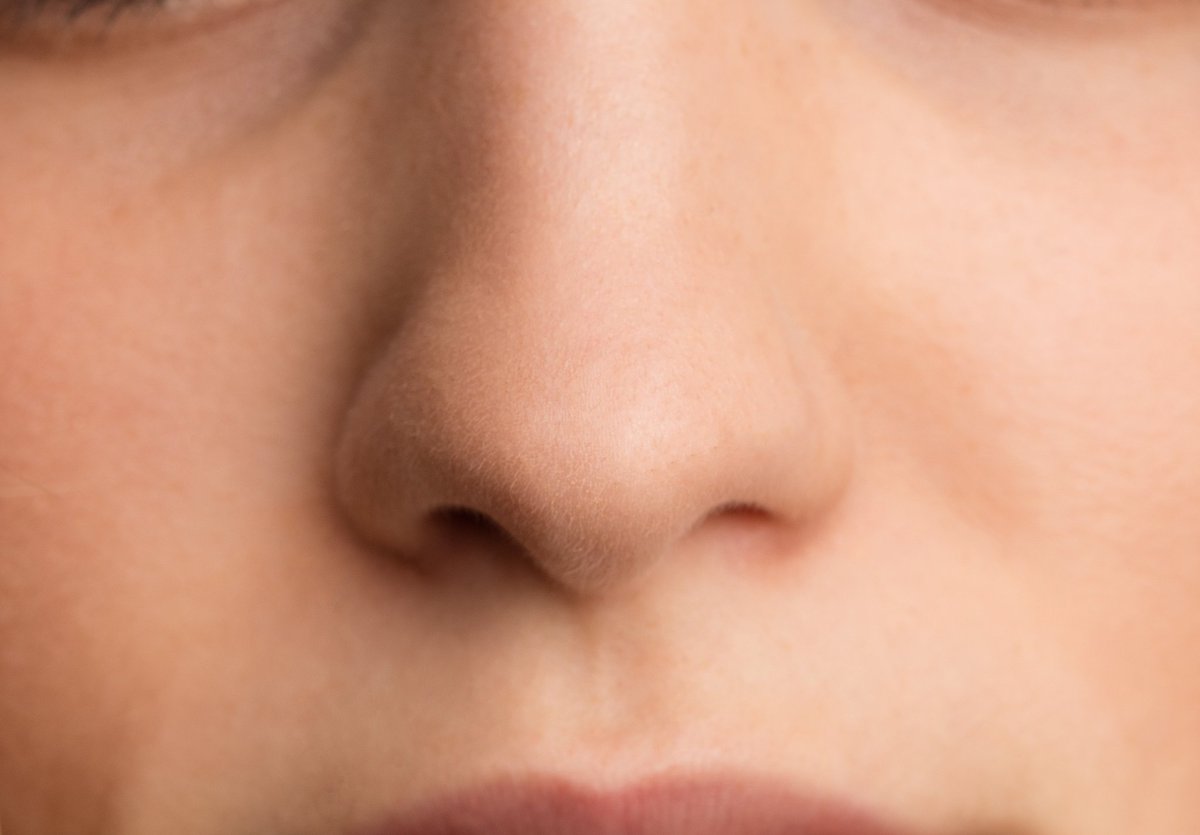 2500/ajra.2016.30.4318.
2500/ajra.2016.30.4318.
Authors
Ayse Pelin Yigider
1
, Fatma Tulin Kayhan, Ozgur Yigit, Ayse Kavak, Cemal Cingi
Affiliation
- 1 Otorhinolaryngology and Head and Neck Surgery Clinic, Bakirkoy Dr Sadi Konuk Research and Training Hospital, Istanbul, Turkey.
PMID:
27216341
DOI:
10.2500/ajra.2016.30.4318
Abstract
Objectives:
The goal of this study was to review the main lesion types of the nasal skin and appropriate treatment strategies rather than to present a comprehensive list of all diseases that affect the skin that can involve the nose.
Methods:
We reviewed the main nasal skin lesion types and available treatment strategies. Nasal skin lesions were classified as benign, premalignant, or malignant.
Results:
Benign lesions of the nose include nonmalignant tumoral lesions (i.e., freckles, comedo, adenoma sebaceum [Pringle disease], hydrocystoma, fibrous papules, sebaceous hyperplasia, and rhinophyma), autoimmune and inflammatory conditions (i.e., pemphigus, sarcoidosis, systemic lupus erythematosus, facial eosinophilic granuloma, rosacea, herpes zoster infection, leishmaniasis, and leprosy), and vascular lesions (i.e., telangiectasis, hemangioma, and spider nevus). Premalignant lesions are actinic keratosis and keratoacanthoma; and malignant tumors are melanoma, basal cell carcinoma, and squamous cell carcinoma. Regardless of whether or not they are malignant, all facial lesions can yield significant cosmetic discomfort that should be evaluated carefully before commencing any curative or corrective intervention. In general, benign lesions are treated with dermabrasive modalities, such as trichloroacetic acid, phenol, salicylate, and laser ablation. Electrocautery, cryosurgery, and surgical excision are also used, although these methods may result in scar formation, which can sometimes be more problematic than the original lesion itself.
In general, benign lesions are treated with dermabrasive modalities, such as trichloroacetic acid, phenol, salicylate, and laser ablation. Electrocautery, cryosurgery, and surgical excision are also used, although these methods may result in scar formation, which can sometimes be more problematic than the original lesion itself.
Conclusion:
Any disease that affects the skin, especially those diseases that are triggered by ultraviolet exposure, can involve the face and nose. Cosmetic defects due both to the lesion itself and the intervention must be discussed with the patient, preferably in the presence of a first-degree relative, before commencement of treatment. As a result of heterogeneity of skin lesions of the nose, appropriate education of general practitioners as well as otorhinolaryngologists is mandatory.
Similar articles
[Treatment of precancerous conditions of the skin].

Eichmann A.
Eichmann A.
Ther Umsch. 1989 Feb;46(2):138-41.
Ther Umsch. 1989.PMID: 2928983
German.
Basal cell carcinoma and rhinophyma.
Leyngold M, Leyngold I, Letourneau PR, Zamboni WA, Shah H.
Leyngold M, et al.
Ann Plast Surg. 2008 Oct;61(4):410-2. doi: 10.1097/SAP.0b013e31816cad18.
Ann Plast Surg. 2008.PMID: 18812712
Actinic keratoses–surgical and physical therapeutic modalities.
Yu TC, Rahman Z, Ross BS.
Yu TC, et al.
Cutis. 2003 May;71(5):381-4.
Cutis. 2003.PMID: 12769405
Review.
Actinic cheilitis. A treatment review.
Dufresne RG Jr, Curlin MU.
Dufresne RG Jr, et al.

Dermatol Surg. 1997 Jan;23(1):15-21.
Dermatol Surg. 1997.PMID: 9107289
Review.
S2k guideline: Laser therapy of the skin.
Paasch U, Zidane M, Baron JM, Bund T, Cappius HJ, Drosner M, Feise K, Fischer T, Gauglitz G, Gerber PA, Grunewald S, Herberger K, Jung A, Karsai S, Kautz G, Philipp C, Schädel D, Seitz AT, Nast A.
Paasch U, et al.
J Dtsch Dermatol Ges. 2022 Sep;20(9):1248-1267. doi: 10.1111/ddg.14879. Epub 2022 Sep 13.
J Dtsch Dermatol Ges. 2022.PMID: 36098675
See all similar articles
Cited by
Recognizing skin conditions in patients with cirrhosis: a narrative review.
Liu Y, Zhao Y, Gao X, Liu J, Ji F, Hsu YC, Li Z, Nguyen MH.
Liu Y, et al.
Ann Med. 2022 Dec;54(1):3017-3029. doi: 10.1080/07853890.2022.2138961.
doi: 10.1080/07853890.2022.2138961.
Ann Med. 2022.PMID: 36308406
Free PMC article.Review.
Shotgun metagenomic sequencing reveals skin microbial variability from different facial sites.
Wei Q, Li Z, Gu Z, Liu X, Krutmann J, Wang J, Xia J.
Wei Q, et al.
Front Microbiol. 2022 Jul 26;13:933189. doi: 10.3389/fmicb.2022.933189. eCollection 2022.
Front Microbiol. 2022.PMID: 35966676
Free PMC article.Eradication of Benign Skin Lesions of the Face by Voltaic Arc Dermabrasion (Atmospheric Plasma): Postoperative Pain Assessment by Thermal Infrared Imaging.
Scarano A, Carinci F, Candotto V, Lorusso F.
Scarano A, et al.
Aesthetic Plast Surg. 2020 Dec;44(6):2277-2285. doi: 10.1007/s00266-020-01891-z. Epub 2020 Aug 6.
Aesthetic Plast Surg. 2020.
2020.PMID: 32767038
Free PMC article.Keratoacanthoma of the Nasal Septum Secondary to Ranibizumab Use.
Cohn JE, Caruso Sales HM, Nguyen GH, Spector H, Briskin K.
Cohn JE, et al.
Case Rep Pathol. 2017;2017:8257590. doi: 10.1155/2017/8257590. Epub 2017 May 11.
Case Rep Pathol. 2017.PMID: 28584672
Free PMC article.Immunorhinology and rhinosinusitis: Where are we heading?
Sacks R.
Sacks R.
Am J Rhinol Allergy. 2016 May;30(3):159-60. doi: 10.2500/ajra.2016.30.4341.
Am J Rhinol Allergy. 2016.PMID: 27216344
Free PMC article.No abstract available.
Publication types
MeSH terms
Full text links
Atypon
Cite
Format:
AMA
APA
MLA
NLM
Send To
Rhinophyma (nose): Causes, pictures, and treatment
Rhinophyma is a skin disorder that causes the nose to become enlarged. Some other symptoms include lumpy, thickened skin and broken blood vessels.
Some other symptoms include lumpy, thickened skin and broken blood vessels.
The condition is much more common in males than females and usually develops between the ages of 50–70.
Researchers do not fully understand the cause, but they know that the precursor is acne rosacea, which involves inflammatory breakouts of pimples.
Once acne rosacea progresses to rhinophyma, the skin covering the nose increases in size and the tip of the nose expands. This characteristic appearance forms the basis of a diagnosis.
In the early stages, treatments involves medications, but in the advanced stages, it involves surgery. This is because affected tissue may obstruct the airways. The procedure smoothes or removes rough, thickened areas of skin and is safe and effective.
Keep reading to learn more about the causes, symptoms, diagnosis, and treatment of rhinophyma.
Rhinophyma involves an increase in sebaceous, or oil, glands and underlying connective tissues in the face. According to 2021 research, the exact cause is still unclear, and several factors may play a role. These include a combination of conditions that affect the immune system, nerves, and blood vessels.
According to 2021 research, the exact cause is still unclear, and several factors may play a role. These include a combination of conditions that affect the immune system, nerves, and blood vessels.
The precursor to rhinophyma is acne rosacea, a long-term skin condition that is more common in females. A subset of people with acne rosacea later develops rhinophyma.
Rhinophyma occurs more often in males, at a ratio ranging from 5:1 to 30:1 and it typically develops in people aged 50–70. Due to the higher prevalence in males, scientists suspect that male hormones increase the risk.
Some people believe that alcohol consumption may lead to the condition, but studies do not support this link. However, alcohol and caffeine can both temporarily dilate blood vessels, which seems to worsen rhinophyma.
Evidence shows that rhinophyma begins as “pre-rosacea,” and the only symptom at this stage is facial flushing.
Later, this condition advances to vascular rosacea, which involves swollen blood vessels and redness. It later progresses to acne rosacea and causes inflammatory breakouts.
It later progresses to acne rosacea and causes inflammatory breakouts.
Finally acne rosacea advances to late stage rosacea, and rhinophyma is an aspect of this.
Excessive facial flushing is often the first symptom of rosacea. If it progresses to rhinophyma, a person may have:
- thickened skin on the nose and elsewhere on the face
- expansion of the tip of the nose
- a bumpy texture on areas of the face
- enlarged pores
- oily skin
At this point, the condition may obstruct the airways. Also, chronic infection often results because the fluid from the sebaceous glands thickens and can hold bacteria.
Over time, the number of sebaceous glands and the changes in connective tissue increase, which can result in progressive deformity.
In addition, there is a link with cancer. Basal cell carcinoma occurs in 3–10% of people with rhinophyma, although the condition is benign at the beginning.
The characteristic appearance of rhinophyma often makes it easy to diagnose with a visual examination.
Doctors base their diagnosis on the presence of at least one primary feature and at least one secondary feature.
Primary features include:
- blushing
- persistent redness
- pustules, small pimples containing pus
- papules — small, solid pimples that are usually inflamed but do not produce pus
- broken or dilated blood vessels near the skin’s surface
Secondary features include:
- roughened patches of skin on the face
- swelling
- burning or stinging areas of the skin
- eye symptoms, such as watery eyes or swelling of the eyelids
- marked thickening of skin or excess tissue
- these symptoms elsewhere on the body
Both nonsurgical and surgical treatments are available.
Nonsurgical treatments
Findings show that certain medications help. One option is topical metronidazole (Metrocream), a dug that reduces skin inflammation by inhibiting the generation of reactive oxygen species.
Another option is isotretinoin, a drug that shrinks the sebaceous glands, limiting how much oil they make. However, if a person wishes to have surgery, they must stop taking this medication.
Surgical treatment
Advanced rhinophyma requires surgery to remove affected tissue. A 2020 study describes the following safe, effective five-step surgical technique for rhinophyma:
- Dermabrasion: A motorized device resurfaces the skin to facilitate the next steps.
- Dermaplaning: This involves removing affected tissue without directly cutting it. It prepares the skin’s surface for the third step.
- Debulking: The surgeon uses curved scissors to cut away the thickened skin. They also take samples of any areas that may be malignant and send them to a lab for analysis.
- Electrocautery: This involves using heat to destroy the affected tissue.
- Laser use: This final step seals and micro-contours the wound.

Few long-term studies have explored how often rhinophyma recurs after surgery, though limited research suggests that this is possible.
In the early stages of rhinophyma, a person may experience excessive facial flushing. As the condition progresses, swollen blood vessels appear, then acne-like pimples.
Later, the nasal skin grows and the tip of the nose becomes larger. At this stage, doctors diagnose rhinophyma. It is benign initially, but it may block airways and increase the risk of skin cancer.
Surgical and drug-based treatments can help, but limited research suggests that the condition may recur after surgery.
Rinofima. What is Rhinophyma?
IMPORTANT
The information in this section should not be used for self-diagnosis or self-treatment. In case of pain or other exacerbation of the disease, only the attending physician should prescribe diagnostic tests. For diagnosis and proper treatment, you should contact your doctor.
Rhinophyma is a tumor-like benign change in the skin of the nose, which is manifested by hypertrophy of all elements of the nose, which disfigures a person’s face. Since all elements of the skin increase, the size and width of the ducts of the sebaceous glands are also hypertrophied. With rhinophyma, increased sebum secretion is noted, fat accumulates in the ducts, decomposes, resulting in an unpleasant odor. A simple dermatological examination is usually sufficient to make a diagnosis of rhinophyma. The results of a cytological examination of the discharge from the mouths of hypertrophied sebaceous glands allow to clarify the diagnosis.
ICD-10
L71.1 Rhinophyma
- Causes and mechanism of development of rhinophyma
- Clinical manifestations of rhinophyma
- Diagnostics
- Treatment of rhinophyma
- Prophylaxis
- Prices for treatment
General information
Rhinophyma is a tumor-like benign change in the skin of the nose, which is manifested by hypertrophy of all elements of the nose, which disfigures a person’s face. Since all elements of the skin increase, the size and width of the ducts of the sebaceous glands are also hypertrophied. With rhinophyma, increased sebum secretion is noted, fat accumulates in the ducts, decomposes, resulting in an unpleasant odor.
Since all elements of the skin increase, the size and width of the ducts of the sebaceous glands are also hypertrophied. With rhinophyma, increased sebum secretion is noted, fat accumulates in the ducts, decomposes, resulting in an unpleasant odor.
Causes and mechanism of development of rhinophyma
Rhinophyma is an infiltrative-productive complication of rosacea and is more often diagnosed in men over forty years of age. If there is no rosacea or rosacea in the anamnesis of a patient with rhinophyma, then it is considered as a separate disease. The etiology of the disease is not fully understood, but in people who are prone to frequent overheating and hypothermia, temperature fluctuations, such pathologies are diagnosed more often; high humidity or excessive dryness, as well as dusty air, also increase the risk of rhinophyma.
Patients with rhinophyma usually have a history of endocrine diseases, hormonal disorders, and diseases of the gastrointestinal tract. Hypovitaminosis, stressful situations and dietary errors are not in themselves the main cause of rhinophyma, but in combination with the above factors increase the likelihood of its occurrence.
Hypovitaminosis, stressful situations and dietary errors are not in themselves the main cause of rhinophyma, but in combination with the above factors increase the likelihood of its occurrence.
There is no direct connection between rhinophyma and chronic alcoholism, but given that diseases of various organs and systems are associated with alcoholism, excessive drinking and rhinophyma are closely related. Congenital vascular changes in the skin of the face and transformation of the congenital vascular nevus in most patients lead to phim-like changes in the skin of the face.
Clinical manifestations of rhinophyma
Outwardly, rhinophyma looks like a growth, this occurs due to hypertrophy and hyperplasia of the nasal skin. The growth can be single or in the form of nodes, then nodular rhinophyma is diagnosed. Due to dilated vessels, the color of hypertrophied nodes can vary from red to dark brown and purple.
Large sebaceous glands and follicles are clogged with keratin, the area affected by rhinophyma is a lymphatic interfollicular inflammatory infiltrate.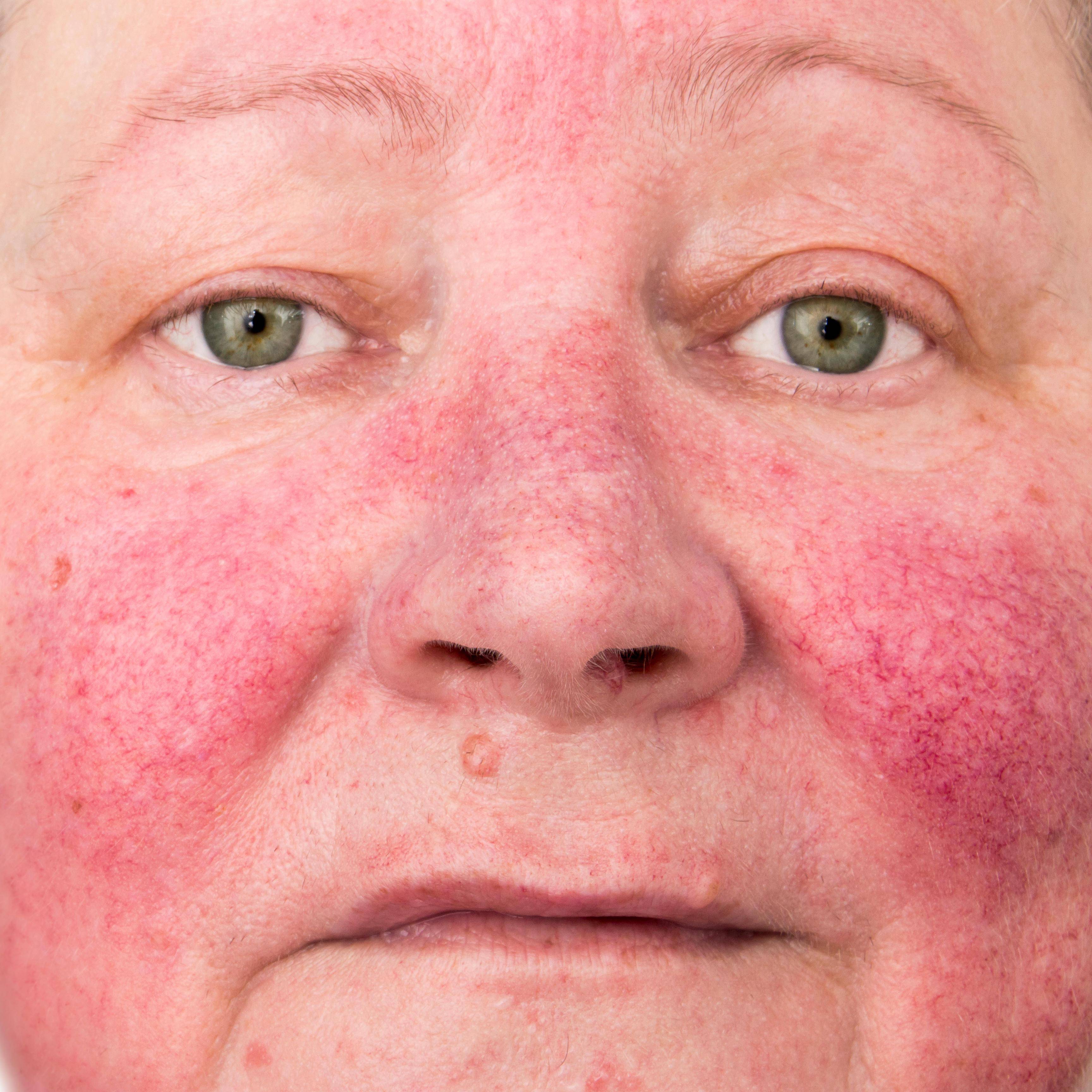 If the rhinophyma progresses, then granulomas are observed and often the giant sebaceous glands are emptied into the normal sinus. With rhinophyma, it is clearly seen that most of the hypertrophied tissue consists of dilated vessels with thin walls. Skin affected by rhinophyma is more susceptible to the development of neoplasms.
If the rhinophyma progresses, then granulomas are observed and often the giant sebaceous glands are emptied into the normal sinus. With rhinophyma, it is clearly seen that most of the hypertrophied tissue consists of dilated vessels with thin walls. Skin affected by rhinophyma is more susceptible to the development of neoplasms.
Rhinophyma occurs in several varieties:
Granular forms are diagnosed more often, growths of the skin of the nose in this case outwardly look like rough knots. The consistency of the nodes is soft, and the surface of the area affected by rhinophyma is glossy greasy with a bluish and less often purple tint.
The fibrous form of rhinophyma is less common, with this form the skin layers are also hypertrophied, but the skin is dense, which retains the configuration of the nose. The surface is smooth, shiny from enlarged pores, sebum may be released, which, when interacting with air, acquires an unpleasant odor. On palpation, pronounced hyperplasia of the sebaceous glands of various densities is felt.
On palpation, pronounced hyperplasia of the sebaceous glands of various densities is felt.
Fibroangiomatous rhinophyma is clinically similar to the fibrous form of rhinophyma, but the nodes are more elastic and soft on palpation. Due to the large number of telangiectasias, the surface of the nose has a dark red color. This form of rhinophyma is differentiated from the rest by the presence of a large number of superficial and deep pustules. The content of the pustules is bloody-purulent, which shrinks into crusts as it is evacuated. Patients, in addition to shortness of breath, complain of itching, soreness and paresthesia.
The actinic form of rhinophyma has a more benign course, the layers of the dermis thicken evenly and slightly, the nose acquires a cyanotic color, telangiectasias are localized mainly on the wings of the nose. With this form of rhinophyma, there are no pustules, and the mouths of the sebaceous glands are slightly dilated, as a result of which sebum is separated moderately without the formation of crusts on the surface of the nose. The main pathogenetic component of actinic rhinophyma is actinic elastosis.
The main pathogenetic component of actinic rhinophyma is actinic elastosis.
The course of rhinophyma is long, with a series of stages of remission of the process and stages of active growth. As a rule, active growth of rhinophyma is observed in the first years of the disease, after a few years the growth may completely stop, but the reverse development of rhinophyma is not observed. Rhinophyma makes nasal breathing difficult, and with a huge size and food intake, despite the fact that the pathological process does not affect the cartilage, the pressure from the overgrown rhinophyma on them is so great that the nasal cartilages are deformed or undergo complete destruction.
Diagnosis
The diagnosis of Rhinophyma is usually made by a dermatologist on the basis of a visual examination, the patient’s medical history and anamnesis. When pressed, a white pasty secretion is released from the deeply retracted mouths. The results of a cytological examination of the discharge make it possible to accurately diagnose, microscopy reveals a large number of epithelial cells, sebum, saprophytic microflora, pathogenic microflora may not always be present, the presence of demodex mites is also not always observed.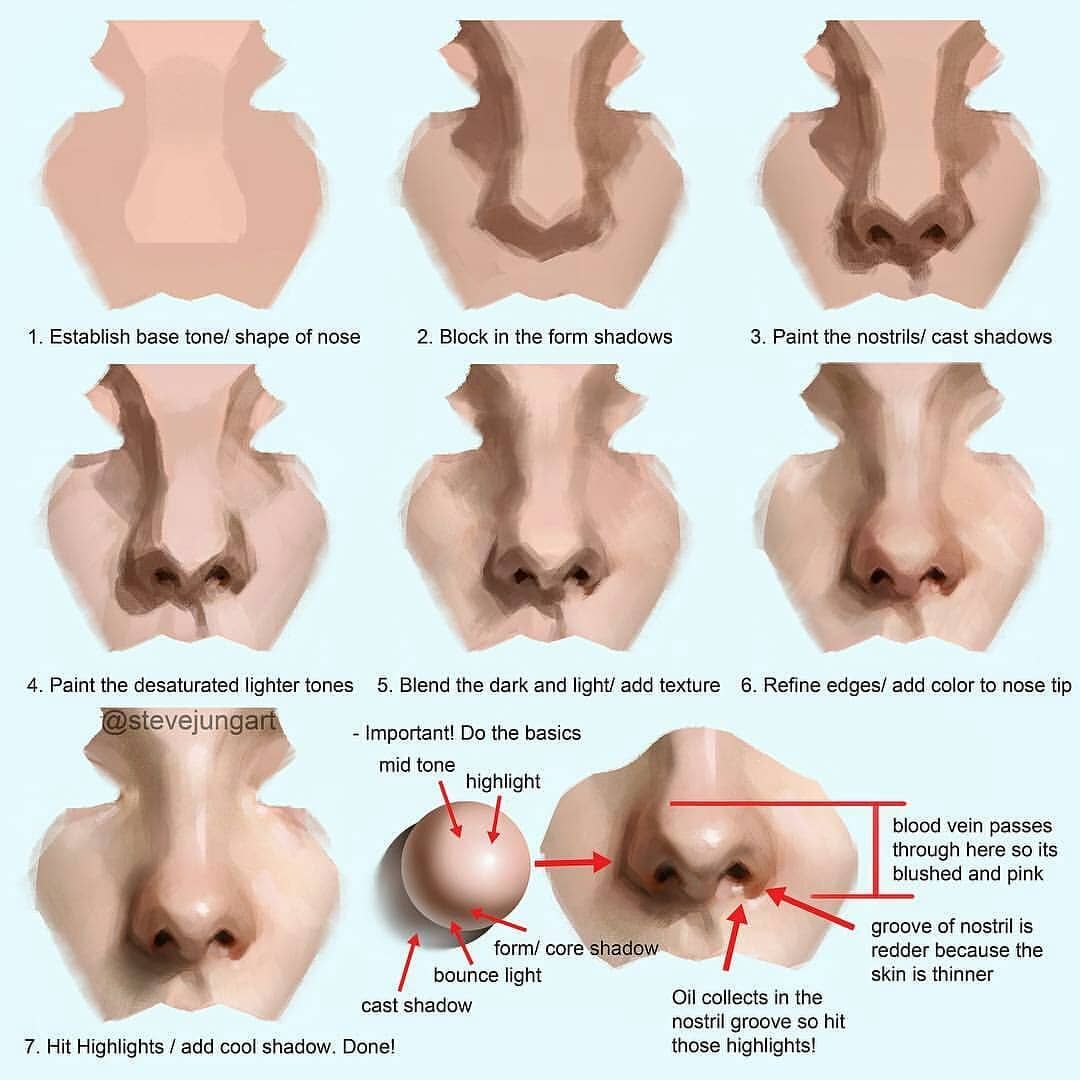
Despite the bright and specific clinical manifestations of rhinophyma, it must be differentiated from demodicosis, since rhinophyma can be complicated by demodicosis, but the latter is not the main pathogenetic mechanism; Cutaneous T-cell lymphomas, sarcaidosis, and lymphatic leukemias can also present as overgrowths of nasal skin tissue. Additional examinations, such as tissue biopsy, followed by histological analysis, help to exclude or confirm the diagnosis of “Rinophyma”.
Treatment of rhinophyma
Therapeutic methods of rhinophyma do not bring results, and therefore various methods of surgical treatment are used. Dermabrasion of the skin area affected by rhinophyma gives good results with minor tissue growths and in the initial periods of the disease. Subcutaneous excision of overgrown tissues and wedge-shaped excision of areas affected by rhinophyma with intradermal sutures are indicated for deep lesions of the nasal skin and when it is impossible to use other methods of surgical treatment of rhinophyma.
Laser therapy for rhinophyma during treatment allows modeling disfigured forms of the nose, that is, therapeutic and aesthetic effects are achieved. If a small area is affected by rhinophyma, then laser removal of the overgrown dermis is indicated. The process of epithelialization occurs 7-10 days after the procedure. The radio wave method in the treatment of rhinophyma allows you to quickly and effectively eliminate all clinical manifestations and restore the shape of the nose. With this treatment, there is practically no blood loss, no swelling, the likelihood of postoperative complications is minimal, and the rehabilitation process is short.
Sometimes, with layer-by-layer excisions of rhinophyma, patients require rhinoplasty to restore its shape and achieve an aesthetic appearance. But the main point in therapy is the partial removal of outwardly unchanged tissues in order to reduce the likelihood of recurrence of rhinophyma. With a properly performed operation, relapses occur in only a few percent of patients.
Prevention
There is no specific prevention of rhinophyma, but timely treatment of rosacea and rosacea reduces the risk of rhinophyma. After surgical treatment of rhinophyma, patients should avoid sudden changes in temperature, review their diet and, if necessary, change jobs.
You can share your medical history, what helped you in the treatment of rhinophyma.
Sources
- self-treatment. In case of pain or other exacerbation of the disease, only the attending physician should prescribe diagnostic tests. For diagnosis and proper treatment, you should contact your doctor.
Rinofima
To the guide
Rhinophyma is a hypertrophic neoplasm on the skin of the external nose, provoked by chronic inflammation of the sebaceous glands.
Article rating
5.00 (Voted: 2)
Rhinophyma is a hypertrophic formation on the skin of the external nose, which has developed as a result of chronic inflammation of the sebaceous glands against the background of disorders of the endocrine and digestive systems.

Causes of rhinophyma
Factors causing disease:
- alcohol abuse;
- high content of spices in food;
- systematic effects of low or high temperatures on the tissues of the nose;
- immunosuppression;
- pathology of the gastrointestinal tract.
Sometimes the pathological process is supported by demodex folliculorum mite inhabiting the sebaceous glands.
Clinical picture
At the initial stage, the skin of the nose is covered with nodules of a reddish hue. Subcutaneous vessels in the cartilaginous region become visible to the naked eye. The growth of these nodules leads to tissue hypertrophy, which now affects not only the sebaceous glands, but also the blood and lymphatic vessels.
This results in a kind of growth on the skin. Its surface is covered with tubercles, usually in the amount of three (in front and on the sides). The color of the nodules changes from red to blue-purple.
 On average, the diameter of such neoplasms is from 5 to 8 centimeters. Pain is absent.
On average, the diameter of such neoplasms is from 5 to 8 centimeters. Pain is absent.Rhinophyma is more typical for men, occurs in old age. Timely treatment is required to avoid malignancy.
Diagnosis
Diagnosis of the disease, taking into account the characteristic clinical signs, does not cause difficulties. According to the results of histological examination, growths in the connective tissue are revealed, the number of sebaceous glands is increased, the walls of the vessels around which inflammatory elements are concentrated are thickened.
Treatment of rhinophyma
Treatment is complex and depends on the stage of development of the disease. At the stage of single pink nodules, the essence of therapy is to restore microcirculation in the skin. The main attention is paid to the correction of disorders in the digestive system.
Medicines are prescribed to improve digestion, for example, “Hilak forte”, “Bifidumbacterin” and others.
 Inflammation is controlled by local treatment of the integument with metronidazole ointment, the application of boron and other lotions, as well as by the use of metronidazole and alternative antimicrobials.
Inflammation is controlled by local treatment of the integument with metronidazole ointment, the application of boron and other lotions, as well as by the use of metronidazole and alternative antimicrobials.In the stage of rhinophyma, treatment is only surgical. Surgical removal of hyperemic skin areas is performed under local or general anesthesia. At the same time, the aesthetic shape of the nose is recreated. The postoperative wound is closed with a vaseline bandage. As new, healthy tissue forms, scarring does not form.
Prevention
The basis of disease prevention is: a favorable general regimen, dosed exposure to ultraviolet light, the exclusion or minimization of sudden temperature fluctuations and prolonged hypothermia. It is important to follow a diet that prescribes to limit the consumption of alcohol, coffee, smoked meats and foods high in spices.


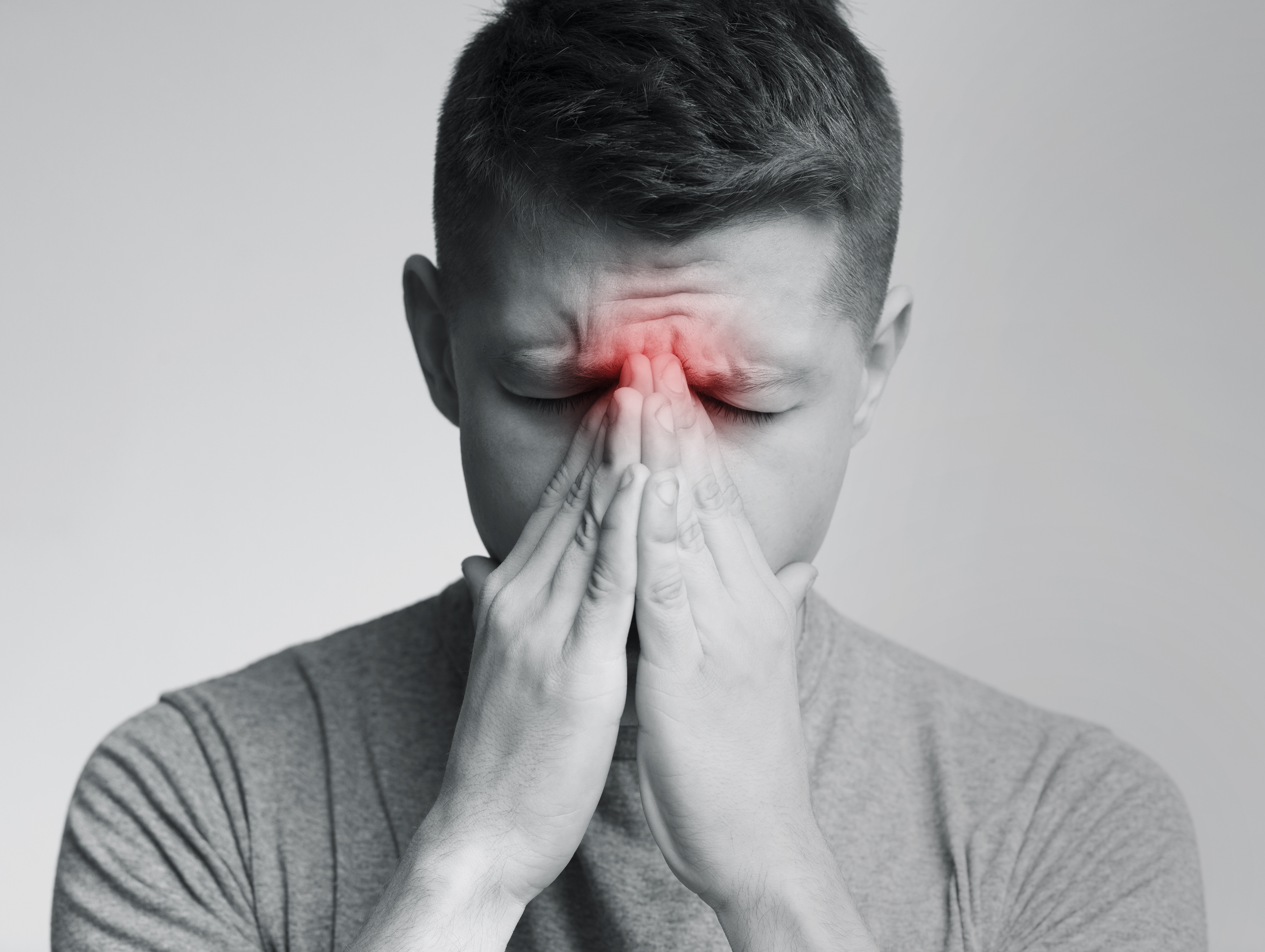
 doi: 10.1080/07853890.2022.2138961.
doi: 10.1080/07853890.2022.2138961.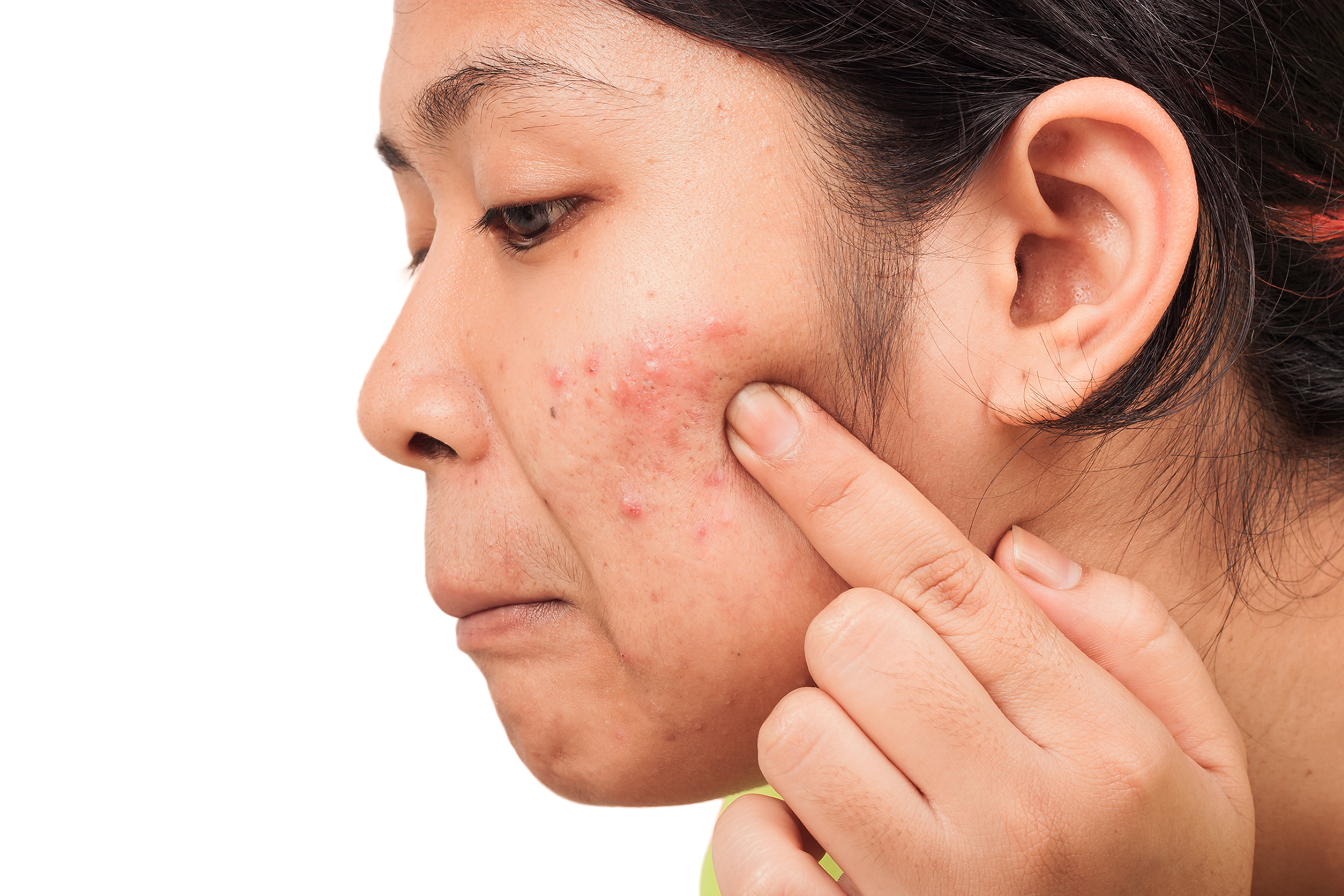 2020.
2020.

 On average, the diameter of such neoplasms is from 5 to 8 centimeters. Pain is absent.
On average, the diameter of such neoplasms is from 5 to 8 centimeters. Pain is absent. Inflammation is controlled by local treatment of the integument with metronidazole ointment, the application of boron and other lotions, as well as by the use of metronidazole and alternative antimicrobials.
Inflammation is controlled by local treatment of the integument with metronidazole ointment, the application of boron and other lotions, as well as by the use of metronidazole and alternative antimicrobials.